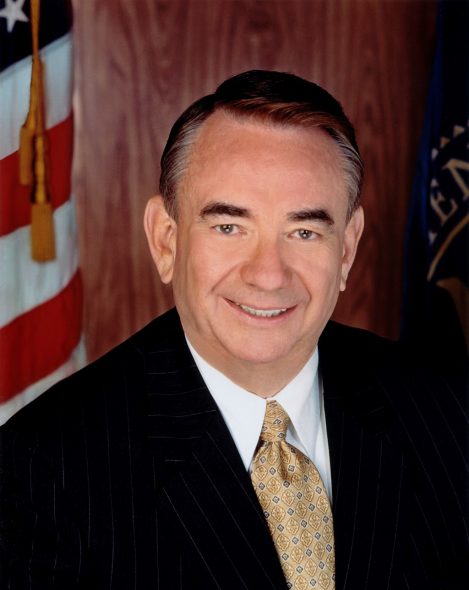Tommy Thompson Is Wrong About Prisons
He regrets 1991 plan I wrote. But he never implemented it.
Former Governor Tommy Thompson regrets his role in implementing a 1991 plan to expand state prisons. While I don’t regret writing that plan, I do wish the state actually had implemented it.
The Journal Sentinel reports the following based on “a wide-ranging conversation” with Mike Gousha at the Marquette Law School: [A]mong [Thompson’s] regrets is getting caught up decades ago in the “hysteria” of locking people up. He wishes he hadn’t built so many prisons.
“We lock up too many people for too long. It’s about time we change the dynamics. I apologize for that,” Thompson said. He’d like to see Wisconsin begin to convert prisons into vocational schools so inmates can get the training they need to get on with their lives and also help solve the state’s worker shortage…
“It’s just that I have matured over the years and I’ve seen the prison systems inside and out. … I’ve studied it. The way we warehouse prisoners right now is not the right way. …Some people have to be in prison, there is no question about it. But we have too many people locked up that should be rehabilitated, retrained and allowed to get out and take a job.”
As if to suggest that such an agenda is straightforward and readily achievable, Thompson added: “If I could…be governor for six weeks and change the prisons, I would do it. I would make that change because that gets me really pumped up.”
There have been three Wisconsin correctional system master plans in the last four decades. The state currently is working on the fourth. Its results will be the focus of major legislative attention next year.
The second of the earlier plans was commissioned by Thompson and Corrections Secretary Steve Bablitch in 1990. To prepare that plan I was hired to coordinate a team of architects and correctional consultants.
Our team introduced a new concept to estimate the space and facilities needed to house the projected number of offenders who would be sentenced to prison. Here’s how the most recent correctional system plan explained our approach:
“Historically, the institutional capacity of the Wisconsin Correctional System was equated with the number of available cells. Viewed in its most simplistic terms, if the facility system had 5,000 cells, it was assumed to have a capacity for 5,000 inmates.
“However, with the introduction of the 1990 Correctional System Development Plan a concerted effort was made to more accurately reflect the totality of conditions that impacted each institution’s ability to confine inmates. The resulting concept came to be recognized as the ‘operating capacity’ which allowed for a variety of factors related to the housing capability and other core conditions to be applied in determining institutional bed capacity.
“As defined in the 1990 Plan, ‘operating capacity’ meant the number of inmates an institution could manage effectively. Rather than relying solely on the number of available housing cells, ‘operating capacity’ was determined by such factors as (i) the mission established for state correctional facilities; (ii) state housing guidelines which accept partial multiple occupancy of cells; (iii) space and equipment needed for medical care, food service, visiting, inmate programs, site infrastructure; and (iv) regulatory requirements.”
The overcrowding in Wisconsin prisons reflects the state’s failure, under Governors Thompson, Jim Doyle, and Scott Walker, to provide the “operating capacity” needed to house offenders sentenced by the state’s circuit courts. While portions of the 1990 plan were implemented — to former Governor Thompson’s current regret — far too little was done to address the lack of true operating capacity.
Thompson says current inmate levels reflect a “hysteria” to lock people up. Yet it remains the case that about three in four offenders in the state correctional system are NOT locked up. They are in so-called community corrections, that is, alternatives to incarceration.
Most judges consider prison sentences as a last resort. Probation and related programs typically are used to divert offenders from prison. In Milwaukee County, and other jurisdictions throughout the state, prosecutors and judges aggressively explore and experiment with prison diversion programs and alternatives to incarceration. Those who are sentenced typically are serious repeat criminals. As described by the nonpartisan Legislative Fiscal Bureau:
“The predominant offenses by [male inmates] are sexual offenses, murder/homicide, robbery, assaults, and burglary. The most common by women are murder/homicide, theft, assault, operating while intoxicated, and robbery.”
While Governor Thompson might regard it as “hysteria” to incarcerate those repeat offenders, it’s magical thinking to suggest that in short order he would turn prisons into vocational schools. His claim to know the issue “inside and out” is at odds with the reality of the background and history of incarcerated offenders. He apparently sees no connection between the expansion of the prison system and the 43 percent reduction in FBI-measured serious crimes since 1990.
Thompson is correct that most inmates will be released. For a range of obvious reasons, they will have a very difficult time working their way back into society. They often lack a high school diploma. Many grew up in an environment of social dysfunction. A history of substance abuse is common.
No one can oppose Thompson’s goal of helping released offenders avoid the revolving door of recidivism. But that worthwhile goal has to be reconciled with the hard and regrettable fact that a very small segment of the state’s population is incorrigible. Their lives are a tragic chronicle of dysfunctional “homes” and neighborhoods that are marked by all the predictors of crime. Most talk about “root causes” of crime skates past these hard realities. The real challenge involves addressing the culture of dysfunction and decay that is the breeding ground for future criminals.
The Contrarian
-
Parents May ‘Break Up’ MPS
 Feb 8th, 2022 by George Mitchell
Feb 8th, 2022 by George Mitchell
-
School Choice Key Issue in Governor Race
 Sep 1st, 2021 by George Mitchell
Sep 1st, 2021 by George Mitchell
-
Jill Underly Flunks School Choice 101
 Feb 22nd, 2021 by George Mitchell
Feb 22nd, 2021 by George Mitchell





















In excusing Wisconsin’s predilection for overfilling its state correctional facilities, George Mitchell omits an important fact. A large portion of admissions to state prisons is for revocation of parole *without* a concurrent new sentence or charge. Revocation can occur when a parolee violates a term of his/her supervision. “Crimeless revocation” is a longstanding problem in Wisconsin and substantially contributes to overcrowding. In 2016, of 9324 admissions, 3280, or 35.2%, were for “revocation only.”